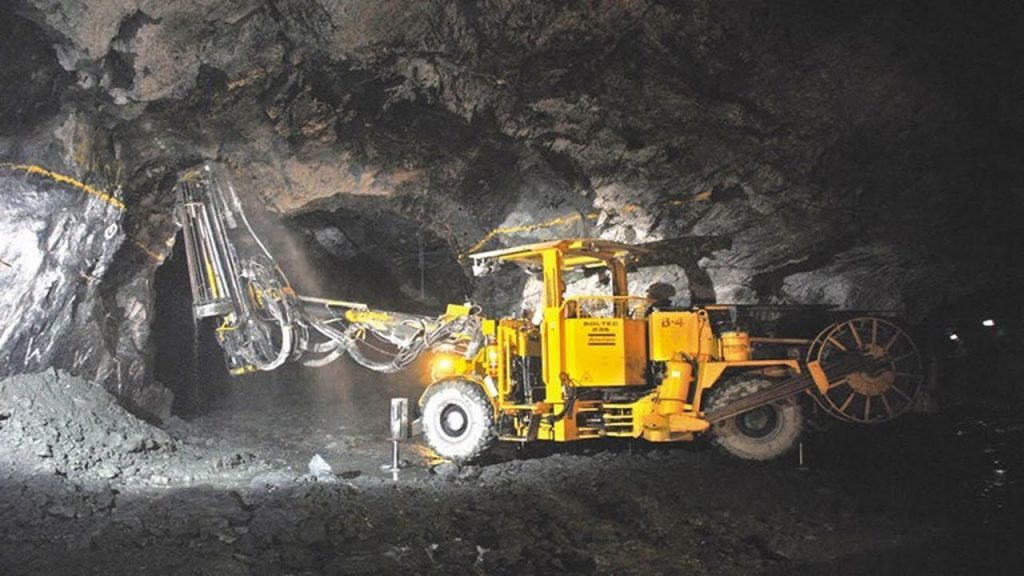India to accelerate domestic uranium mining

By Eugene Gerden
India plans to accelerate domestic uranium mining, despite the COVID-19 pandemic and associated economic recession in the country according to recent statements, made by some senior officials of the Indian government and local producers.
Implementation of these plans will be part of the existing Indian state strategy, which involves increasing domestic uranium production by 10 times by 2030-2032.
According to an official spokesman of Uranium Corporation of India (UCIL), a company which is responsible for the majority of uranium mining activities in the country, the achievement of these goals will allow India to become self-sufficient in uranium and stop further imports from such countries as Russia, Australia and Kazakhstan.
In recent years India has faced the problem of uranium shortage in the country, which was mainly due to a significant expansion of the country’s nuclear program, which includes 21 reactors under construction and 22 in operation.
Plans call for acceleration of production at India’s existing uranium mines as well as speeding development of new ones that could be promising in terms of uranium reserves. The latter are expected to be carried out with the participation of the Indian Atomic Minerals Directorate for Exploration and Research (AMD), a state agency, which oversees the development of uranium and nuclear power sectors in India.
The same agency will be also responsible for the building of new processing plants within the country, with the majority of construction works in this field being scheduled for the second half of the current year.
Particular attention will be paid for the development of prospective uranium regions located in major uranium-producing regions of the country such as Rajasthan, Jharkhand and Telangana.
In the case of Jharkhand province, at present UCIL operates seven mines in the region, including Jaduguda, Bhatin, Narvapahar, Turamdih, Bajata, Banduhurang and Mohuldih. It also has two processing plants in Jharkhand, located near the Jaduguda and Turamdih mines.
Later this year, probably the biggest hopes of UCIL and the Indian government will be the development of the Kanampalli uranium field – India’s largest – located in the southern state of Andhra Pradesh.
At the end of last year, UCIL said the volume of investment that will be allocated in the development of this field will reach US$845 million, which will ensure its daily output up to 6,000 tonnes per day.
These production volumes will be by almost two times higher the production at UCIL’s other largest uranium fields – Tummalapalli and Turamdih – located in the eastern state of Jharkhand where daily output is estimated at 3,000 tonnes of uranium.
In addition to these fields, as part of the plans, UCIL is accelerating the development of the newest discoveries of uranium mine sites in Naktu, Uttar Pradesh and potential deposits in Betul, Madhya Pradesh.
According to analysts’ predictions, successful implementation of these plans will allow India to enter the world’s top five uranium producers, although it will be unlikely that the country will overtake the current leaders of Australia, Russia and Kazakhstan in the middle term.
At the same time, in addition to domestic uranium mining activities, the UCIL, together with the Indian government, have not ruled out the possibility of foreign expansion. As part of these plans, the company may consider the purchase and development of uranium reserves abroad. Their development may be carried out in the form of joint ventures with local governments and producers.
According to analysts at AMD, this is understandable taking into account that the cost of uranium mining in India has significantly increased in recent years and currently continues to increase.
The lack of necessary technology had forced India to extract low-grade uranium ores with low uranium content of 0.1% compared to those abroad with a content of 12-14%. This made the extraction and processing cost of uranium very high compared to other countries. Australia, Kazakhstan, Canada and Russia have the largest resources of recoverable uranium.
Part of the Grosso Group, Blue Sky Uranium Corp. [BSK-TSXV; BKUCF-OTC; MAL2F-FSE] has over 4,000 km2 (400,000 ha) of tenements in Argentina that are prospective for uranium and vanadium. Argentina is the largest generator of electricity from nuclear energy in South America and wants to expand its nuclear sector with additional power plants, but lacks domestic uranium production.
Blue Sky Uranium is targeting near-surface deposits with the potential for near-term low-cost production. Between 2007 and 2012, the company discovered a new uranium district in Rio Negro Province. The Amarillo Grande Project covers the district with three major properties: the near-surface Ivana uranium deposit which hosts the largest NI 43-101 uranium resource in the country and the Anit and Santa Barbara prospects.
The Ivana deposit hosts Inferred Resources of 22.7 million pounds of U3O8 and 11.5 million pounds of V2O5 (28.0 million tonnes averaging 0.037% U3O8 and 0.019% V2O5). A Preliminary Economic Assessment was prepared in 2019.
Other exploration targets for blind uranium and vanadium mineralization are also present. Blue Sky began a 4,500-metre reverse circulation drill program in March at Amarillo Grande.


Radioactive waste from uranium mining in India’s east is reportedly affecting adjacent communities. Thousands of Indians suffered from the effects of uranium mining as related to poor technical and management practices.
In an “emerging uranium producing country like India” there generally are no adequate environmental health and safety legislation, let alone monitoring.
In 2001 and 2002, Hiroaki Koide from the Research Reactor Institute at Kyoto University performed field trips to monitor environmental impacts of the Jadugoda uranium mine and concluded that external gamma dose rate is higher, radon is spreading contamination, contamination by caesium was found at no. 1 tailings pond and product uranium concentrate is dealt with carelessly and was found dispersed at Rakha Mine railway station.